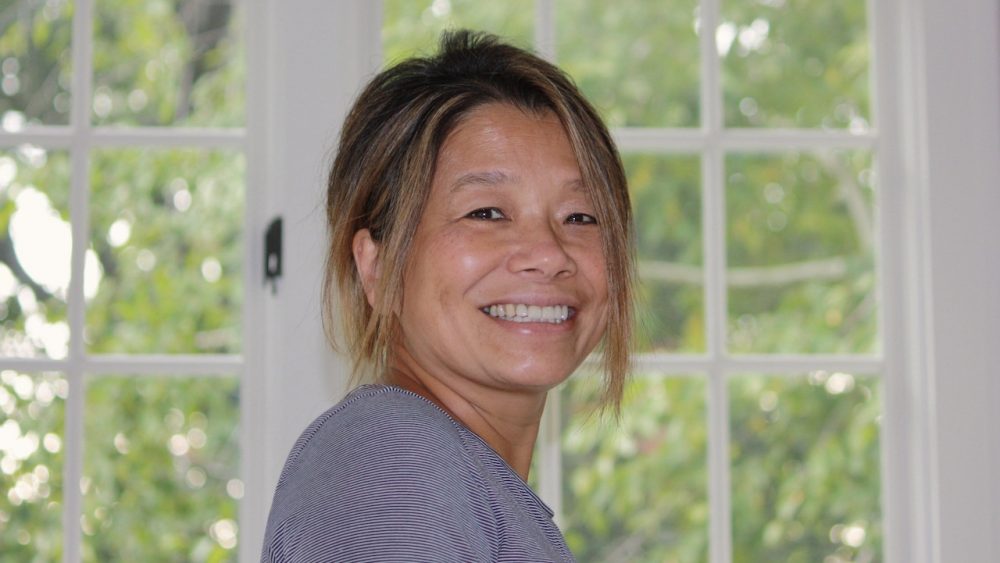Like a hockey player to a gaping net, Nina Liu was drawn to the gap in important data that could improve the lives of so many: missing real-world evidence in chronic conditions, cancer, and rare disease. As the Director of Clinical Product Management at Pulse Infoframe since 2019, Nina is someone you’ll get to know when developing your patient registry, starting at the discovery process.
Solving Puzzles: The Patient Registry Discovery Process
Nina works closely with our founder and CEO, Dr. Femida Gwadry-Sridhar, and others in the company to develop a deep understanding of the needs and requirements for real-world evidence (RWE) research from a clinical product standpoint.
“On the front end, we’re working with our partners to define their RWE research objectives and/or clinical endpoints to design a ‘fit for purpose’ solution,” Nina says. “On the back end, with the data we’re collecting, we can provide the insights and evidence generated from our solution to support their research requirements. We support that continuum.”
Just like hockey players have to figure out how to shoot a puck into one of four corners, Nina has to figure out how to best design a patient registry so that the researchers, patients, and pharma sponsors involved in it get the answers they’re aiming to find. She talks with key opinion leaders, principal investigators, and pharmaceutical sponsors to ask numerous questions, such as:
- Which real-world data (RWD) variables should be collected to address their research questions or product development questions?
- What are their current clinical needs in terms of study protocols?
- What are future needs to support their pipeline for drug development?
- What are the relevant patient reported outcomes?
- What are their current challenges with data and data collection?
- What do they hope to identify from these registries?
Many of these questions are answered through the discovery process that all new clients participate in when considering a Pulse Infoframe patient registry for health and medical research. The discovery process is really a strategy, a game plan on how to attack the problem researchers are investigating, using real-world evidence.
How Real-World Evidence Can Help
To illustrate the kind of data she’s helping researchers shoot for, Nina uses blood pressure medication as an example.
“We all know that if you take your blood pressure medicine, it’ll help your blood pressure,” she says. “But when a drug hits the market, patients need know what the side-effects are. Also, does the drug impact other comorbidities a patient might have? Is the efficacy of the drug consistent for all ethnicities? What is the longer-term outcome on this specific type of treatment?”
Another example use case for RWD is to better understand the impact of variation in care. Generating RWE on the efficacy of different treatment options could help establish clinical guidelines along with recommendations based on real-world scenarios and the context of the patient.
“There are so many contributors to why a treatment can work for one patient and not another,” Nina says. “There isn’t a lot of data around longitudinal outcomes of various treatments. This is where Pulse Infoframe supports these studies. So we can leverage the RWD from our platform to advance precision medicine.”
What Nina Discovered for Herself
Although the discovery process is about the client, it has also opened Nina’s eyes to the world of illness in ways she hadn’t anticipated when she began working at Pulse Infoframe.
“It’s been humbling,” she says. “For example, people living with rare disease worry about things that many people would never think about from a day-to-day basis. Take transportation. Getting to a specialist, or to important studies, or to important annual conferences where they can meet people they have things in common with can be near impossible.”
Nina has also learned more about the role caretakers play.
“Even for caretakers, often the parents of a child living with a rare disease, it’s a lot on them,” she says. “Not only are they trying to take care of their child or children on a day-to-day basis because many have mobility and cognitive issues, but these caregivers don’t have time to take care of themselves.”
Nina was particularly struck by one mother whose child had passed away from a rare disease. She had kept every paper record of her son from diagnosis to passing.
“Just thousands and thousands of pages of information,” Nina says. “The best natural history on a patient that probably exists.”
Working Toward a Common Goal
Nina sees the bigger game plan, where different teams work together for a common goal.
“What’s been interesting working in the advocacy area is that diseases are rare on their own, but there are commonalities in specific disease areas or conditions,” she says. These commonalities can be researched together, providing more people with answers than if research focused only on one disease.
Nina Liu, hockey mom and product manager, never loses sight of that gaping hole in the net. Although there are many players in medical research, she knows that setting up the right game plan from the start will increase the chances of shooting the puck into the net and bringing a community one goal closer to finding a much-needed treatment, or even a cure.



